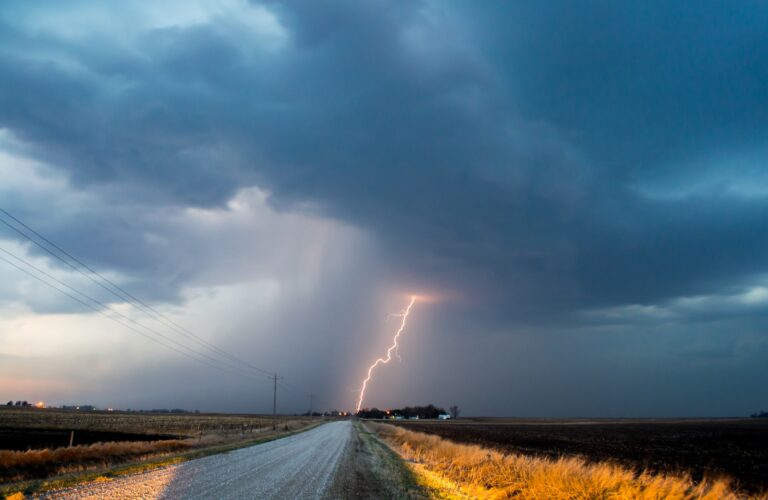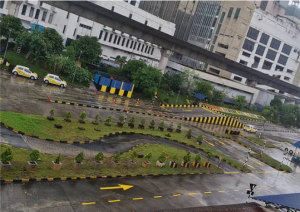Malaysia’s weather is rather erratic lately, therefore motorcar drivers would face various kinds of hazards in different weather conditions when driving on the road.
In Malaysia, The monsoon seasons which normally start from late May to September and from November to January bring enormous rainfalls which sometime would result in flash floods in low-lying areas. Besides, during the hot, dry season in the months of March and April, Malaysia would occasionally face hazy weather due to peat forest fires or slash-and-burn methods practiced by farmers for the preparation of planting new crops.
DRIVING SAFELY ON A WET ROAD
During rainy days, roads become slippery, therefore, it required a long distance for a car to stop completely in case of an emergency.
DISTANCE RULES
The drivers must know how to apply 4 seconds visual scan rule when tailing a vehicle during raining day. To practice this safe distance rule, the drivers must ensure the speed of their car and the vehicle they tailed is roughly the same speed. Make use of a stationary object by the roadside as a guidepost. the stationary objects could be a streetlamp, a tree, or a signpost.
Then, wait to see the vehicle you tailed driving past the pre-determined guidepost ( take for example a streetlamp), then you start counting ” one thousand one, one thousand two, one thousand three and one thousand four”, and if you have not reached the streetlamp at the last count, that means the distance between your car and the front vehicle you were following behind is considered safe.
AQUAPLANING/HYDROPLANING
There is another hazard driving on a wet road during heavy rain and this is because the road surface would accumulate a wedge of water on its surface.
As the result, moving car tyres are in fact gliding on the surface of the water. This causes the tyres of the car to lose grip or touch the road surface. This phenomenon is known as “Aquaplaning”.
Aquaplaning would not only cause the drivers to lose control of the steering wheel they are driving but the control of the acceleration and brake of the car as well. This would increase the risk of the driver not being able to put the car at a complete stop on time in case of an emergency.
To reduce the chances of aquaplaning accidents, the following rules must be observed. Firstly, always drive your car at a low speed on a rainy day.
Secondly, make it a habitual task to carry- out Car Routine Inspections or (RPK) before you are embarking on a journey.
Please check the following list of items on your tyres for a firm grip on the road surface:
(a) The tyre’s thread depth; the minimum thread depth must be at least 1.6 mm (a full depth of a new tire is 8 mm), you can also use a 20 sen coin and insert in between the rib of the tyre and see if only two third of the coin is still visible if so, the tyre is considered still could be used temporary, however, if you could see almost the whole coin, then it is time to replace it with a new one.
(b) the car tyres must be inflated at the correct air pressure, please refer to the recommended tyre pressure chart which is commonly listed on a sticker inside the driver’s door.
(c) check for any physical damage to the tyres especially the surface sidewalls for any cuts, scrape or crack to warrant for a replacement.
A set of tyres with good threads and enough air-pressured would help greatly to disperse water efficiently and quickly keep them back to the traction on the road surface and therefore, would greatly reduce the effects of aquaplaning phenomenon.
FLOODS
In case, there is a flood in the area you are heading, do not take the risk to pass through them because we may not know whether there were drains or ditches under the surface of the water. It is therefore advisable to turn back and find an alternative route to continue your journey.
DRIVING SAFELY IN HAZY OR FOGGY CONDITIONS
During the dry season, due to continuing burning of fire on peat forests or open-air burning practices by farmers in preparation for new crop planting season, the atmosphere would become hazy and therefore, the drivers would face the hazard of limited visibility.
The drivers of the vehicle are advised not to turn on hazard warning lights but instead turn on the headlights if the visibility due to haze/fog is low. This would increase the sighting of road surface and at the same time, they must drive their car slowly and stay on the left edge of the road to avoid straying onto the opposite lane.
Keep a 5-second rule if you are tailing another car from behind and never overtake any slow-moving vehicle ahead of you.
In conclusion, it requires skill, experience, and a little bit of common sense to overcome all these hazards. The golden rule of all is to always stay calm when driving through any bad weather or road condition.












